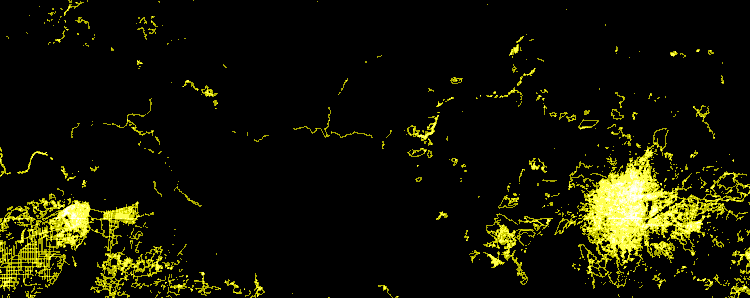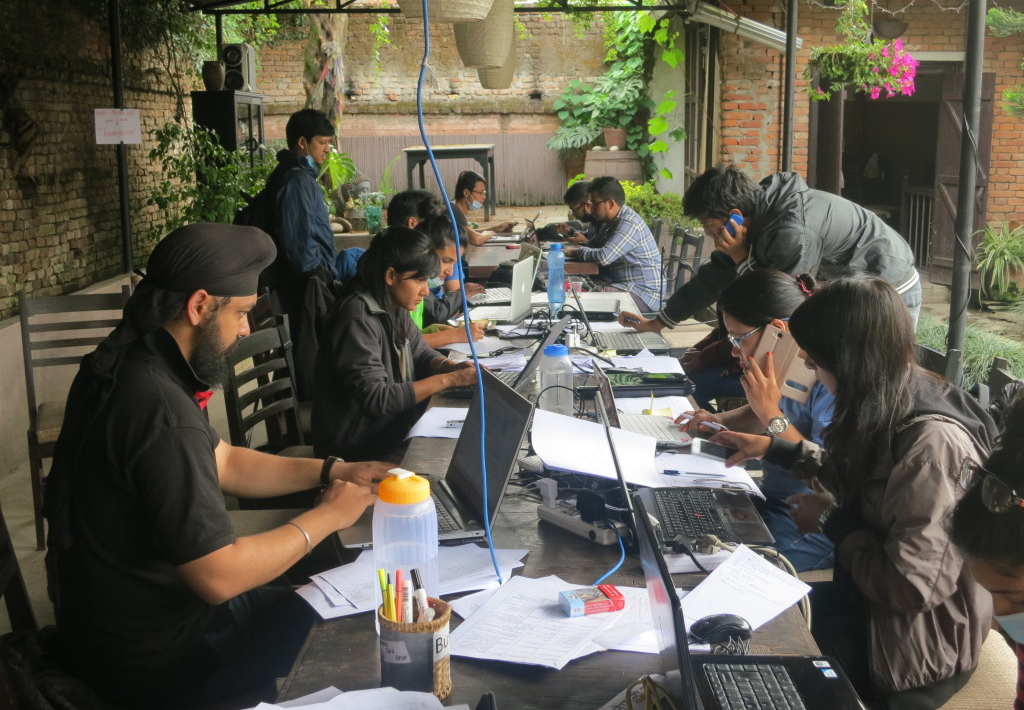Can we harness the power of the collective to shed light on human rights abuses worldwide? We take a look at the digital response to the Nepal earthquake to find out.
On April 25 2014, a 7.8 magnitude earthquake hit Nepal with tremors and aftershocks killing more than 9,000 people. In a country known for its poor roads and nonexistent maps, material and logistical assistance was particularly challenging.
But in just 48 hours, a global network of online volunteers coordinated by local organisations like Kathmandu Living Labs stepped up to fill in the big gaps in the country’s map. It allowed aid to get through more quickly, and helped relief operations on the ground. These volunteers are the new “digital humanitarians”, who have emerged thanks to increased connectivity and the ever-growing adoption of new technologies across the world.
Mapping Nepal in real time

In the month following the earthquake more than 5,055 mappers from all around the world made more than 111,683 edits to an open-source map of Nepal. For the first time, the humanitarian community could use a detailed map of Nepal, including rural villages.
What’s most striking is that around 70% of these volunteers were completely new to mapping and to digital humanitarian response – all they needed was a reliable internet connection and the wish to support relief efforts. By dedicating time to tag and geo-locate roads and buildings using satellite images, they built a map of the country which was not only used for immediate relief, but is now also available for other purposes including agriculture, water, health and sanitation.
Taken together, the individual contributions of these new mappers amounted to 65% of the new roads and buildings added to the map of Nepal.
The wisdom of crowds and the future of human rights
Imagine if we could harness this collective wisdom of crowds to shed light on and respond to human rights abuses?
Imagine if anyone with an internet connection and a drive to make a difference could contribute in real time to map the current refugee crisis, including where people come from, where they are going and where they encounter the biggest blocks? Or to categorize and verify the thousands of hours of video footage available on YouTube documenting the war in Syria? Or even to alert international decision-makers about possible threats, for example by monitoring hate speech on social media.
Examples from humanitarian response, biology and science show that many people have a genuine desire to contribute towards the “greater good”, and that technology makes it easy for anyone, local or global, to pitch into a common effort.
An alternative to clicktivism
This is precisely what Amnesty International is aiming to do over the next two years. We want to inspire this new generation of tech-savvy activists to become human rights monitors and help document human rights violations using technology.
In the first pilot, which will be rolled out in the next few months, we plan to invite people to help us analyze satellite images of things like refugee movements in war zones, or illegal house demolitions. Available microtasking technology will allow anyone to contribute – activists from around the world will take whatever time they can spare to scan small parcels of satellite imagery for an item of interest, such as a tank, oil spill or destroyed building, which could be used as evidence of human rights abuse.
Next, we will focus on data challenges, such as verifying video footage and analyzing large amounts of social media data.
We'll invite people to help us analyze satellite images of things like refugee movements in war zones.
Milena Marin, Amnesty International
It goes without saying that this work opens up a huge set of challenges. We need to take serious steps to ensure that no harm comes to those who choose to engage with Amnesty’s work. We are currently working to understand and address the practical and ethical issues, for example how we protect activists from the shock of witnessing violent crimes in videos and how we secure the data we collect from individuals.
That’s why we are partnering with experts including the Engine Room, the Responsible Data Forum and Aspiration Tech. We plan to adopt an open documentation approach and share our learning as we go.
It won’t be easy or straightforward, but we know we can learn a lot from other sectors, just as we have with the response to the Nepal earthquake. And, as we bring these new tools and tactics to the world of human rights, we’ll include the voices of our supporters and activists across the world.
Want to take part? Subscribe here for updates
This is the first post of Spark: Future thinking in human rights, a jargon-free blog series on the impact of technology in human rights defence. We will use this platform to invite human rights innovators to discuss the latest examples and analysis of emerging technologies and trends shaping the future of human rights.


